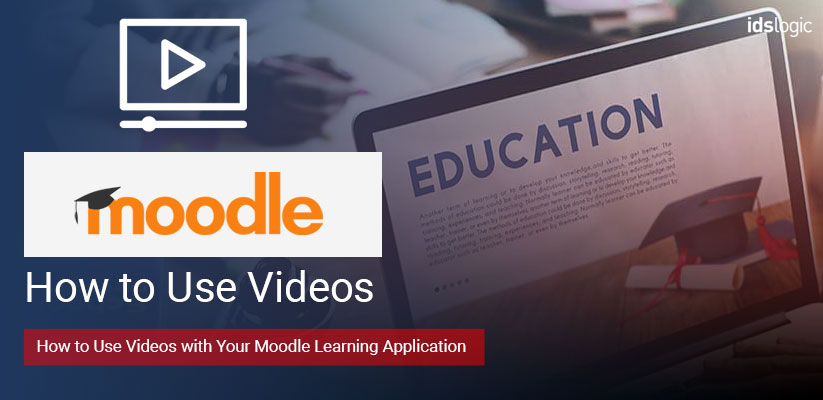
How to Use Videos with Your Moodle Learning Application
With the rapid growth of smartphone and tablets across the globe, students are turning more to online learning course so that they can keep their learning phase continuous. A video acts as a powerful multimedia tool that helps to capture the attention of the learners and also helps them to understand the course module in a better manner.
Moodle is a popular LMS that offers features to integrate and upload Animated, Explainer and Screencast videos with its courses and bring content to life.
According to Cisco, over 80% of the internet traffic will be generated from videos by 2021 and that more than 75% of the worldwide videos will be mobile. They are not only considered as a means of entertainment, but they are also a valuable asset in the world of eLearning.
Adding them to your Moodle LMS development course is a sure way to boost engagement.
“With massive consumption of online videos via mobile apps, it really makes sense to implement it in Moodle e-learning.”
But what kind of videos should you offer? Gone are the days when you had to just record your lectures and offer it to your e-learning students.
Today, the students expect a more engaging and interactive experience and audiovisuals can help them with this and also remain connected with their fellow classmates and educators.
Here are some Ways to Add Audiovisuals to Your Moodle LMS Application:
Make Bite Sized Videos of Lessons:
Instead of recording a long lecture of your course, break it up into shorter videos. Most students prefer something about 6-15 minutes long.
Creating such videos for specific topics, sections or other subsets of your course will help students struggling with long record lessons.
Create Demos:
Even if you create a step by step guide for your Moodle online course, following it in written is always a hectic way.
A better means to educate the learners about any topic is to create a short demo video that helps to understand any experiment or activity in a better manner. These often help the learners to understand the processes easily and execute it during their practical sessions.
Personalizing Your Digital Learning Presence:
When teachers teach exclusively online, then they have to put an extra effort to remain connected with the students. Creating a video that has a personal touch will help students to connect with it easily.
You can easily introduce each unit through it or the week’s topic and give the students an idea about what they should expect in the coming session. This will help them to prepare themselves and lay the foundation.
Teach Some Hand On Skills through Videos:
Few things are better when shown in person. Suppose you have some practical applications, electronics activities, culinary or etc. with videos, your students can easily see the activities demonstrated before them and any absent student can easily catch up and even re-watch it as many times as needed.
Explain Assignment Grading through Videos:
Instead of using a red pen to mark the student assignments, talk to them through your comments in a quick audiovisual clip.
This will help you point out exactly where they need improvements and will also be easier for your students to understand. Students will also love to hear any personal feedback and can focus on their weaker areas.
See who Stays Engaged and who Aren’t
With the latest video analytics tools integrated with your Moodle LMS course, you can see the students who are watching visual and who are not.
This will help you to get an idea of the students who are participating as a whole, and who aren’t and assist them who are lacking behind. Early intervention will help them understand their courses better.
Also Read: Key features of Moodle that make it the best LMS in the market